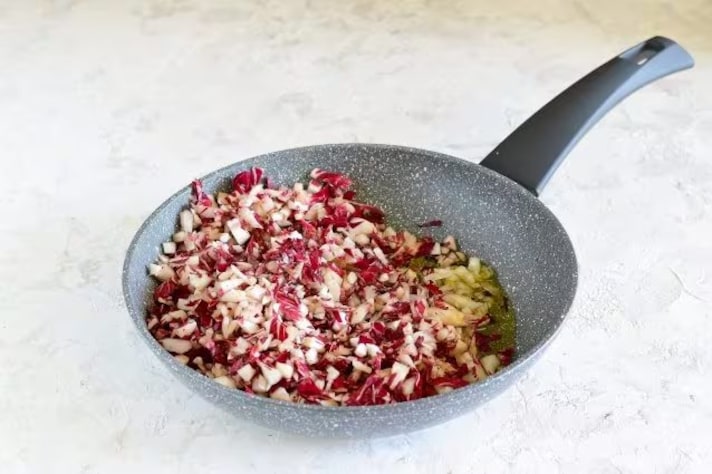How to Remove Radiocchio’s Bitterness: Advices, Combinings and Varities
The bitter taste is the characteristic note of this vegetable, but it is not appreciated by everyone. Here's how to mitigate it thanks to a few tricks, the right combinations and the choice of what type to buy.

One of the most popular vegetables of the winter season is radicchio, a vegetable that has the advantage of being able to be used in the kitchen both raw in salads and cooked in more or less substantial recipes. Radicchio itself is rich in water, has a good fiber content and is, therefore, diuretic and purifying: however, it has a particularity that does not always meet people's tastes: being bitter. If this note excites enthusiasts, for some it becomes the main reason why it is not taken into consideration. Yet, there are some tricks to remove the bitterness, or at least to tone it down.
How to Remove Radicchio's Bitterness?
Radicchio's bitterness is the peculiarity that distinguishes its flavor, but if particularly accentuated it may risk not being appreciated by everyone. For this reason there are some methods to mitigate it, given that it can hardly be eliminated completely.
If you decide to eat the vegetable in a salad it is necessary to remove the external leaves, which, in addition to being more bitter than the heart, are often damaged. At this point, cut the head into strips and immerse them in cold water for about an hour, then wring them out and dry them well.
You can help the operation by adding a few drops of vinegar or lemon to the water. If you want to add radicchio, for example, to lasagna and risotto, you can blanch the leaves in water for a few minutes (without letting them dry, they must remain crunchy) and then use them for other preparations in the pan or in the oven.
The combinations also help: fresh natural cheese such as goat's cheese, stracchino and crescenza, but also plain or Greek yogurt, are excellent for buffering radicchio's bitterness. In the same way, honey and balsamic vinegar also act as mediators with their sweetness and pomegranate, orange or pear thanks to their acidity.

What is the Least Bitter Red Radicchio?
The least bitter radicchio of all is that of Lusia, a white variety with light green and red streaks. However, it does fall into the category of reds and is not suitable for the classic recipes that are made with this product: therefore, round red radicchio is preferable, with a good mix of bitter and sweet notes.

Why is Radicchio Bitter?
What gives radicchio its typical bitter taste is chicoric acid, a molecule which is also found in chicory and which gives both vegetables this flavor. It must be said that not all varieties of radicchio are bitter in the same way and therefore an initial selection can be made at the moment of purchasing: the red Radicchio di Treviso IGP called tardy is famous precisely for having this distinctive characteristic, while the early type is already more moderate, so much so that it is defined as slightly bitter, like Radicchio di Chioggia IGP and Variegato di Castelfranco IGP.
;Resize,width=767;)

;Resize,width=712;)

